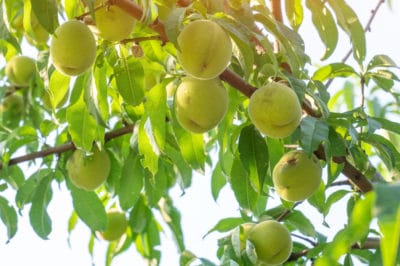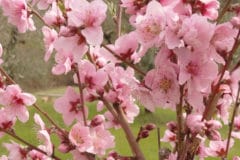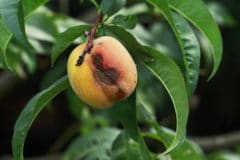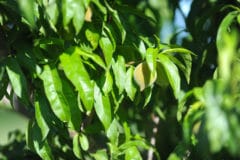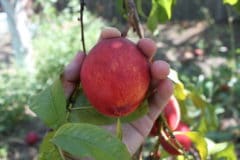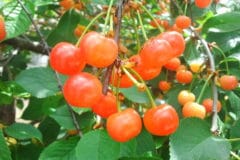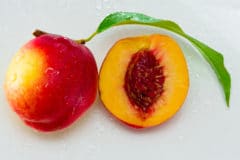Best Climate Zones for Peaches
Peach trees grow best in areas with cool winter temperatures and warm, dry summers. Most peach tree varieties can withstand temperatures as low as 19ºF (-7ºC), although temperatures below freezing can damage flowers and fruit during certain stages of development.
In order for a peach tree to break winter dormancy and set fruit, the tree needs a certain amount of cumulative hours below 45ºF (7.2ºC) known as chill-hours. The number of chill hours needed depends on the peach variety and ranges from 100 to over 1000. Select peach varieties for planting with chill-hour requirements matching the temperatures in your area.
While some varieties of peaches are suited for the slightly warmer or cooler temperature ranges in USDA climate zones 5 and 9, most peach cultivars grow and produce best in zones 6 and 7.
Best Soil and Sun Conditions for Peaches
For best fruit production and healthy growth, a peach tree needs:
- Deep, well-drained, slightly sandy soil with a pH between 6 and 6.5,
- As much sunlight as possible but at least 8 hours of full-sun,
- Clear, dry conditions during fruiting with an average temperature of approximately 75ºF (24ºC),
- A planting area free from late season frost and high humidity.
Avoid planting peach trees in the same spot where another peach tree was planted before, as this can lead to disease problems in the root system.
The Size and Shape of Peach Trees
Peach trees come in full-sized and dwarf varieties. Full-sized trees can reach over 20 feet (6 meters) in height with a width of up to 12 feet (3.6 meters). Dwarf trees only grow 6 to 8 feet (1.8 to 2.4 meters) in height with a spread of approximately the same size.
Plant peach trees in rows with a size slightly larger than the width of the tree so each tree has enough space to grow without interfering with neighboring trees.
